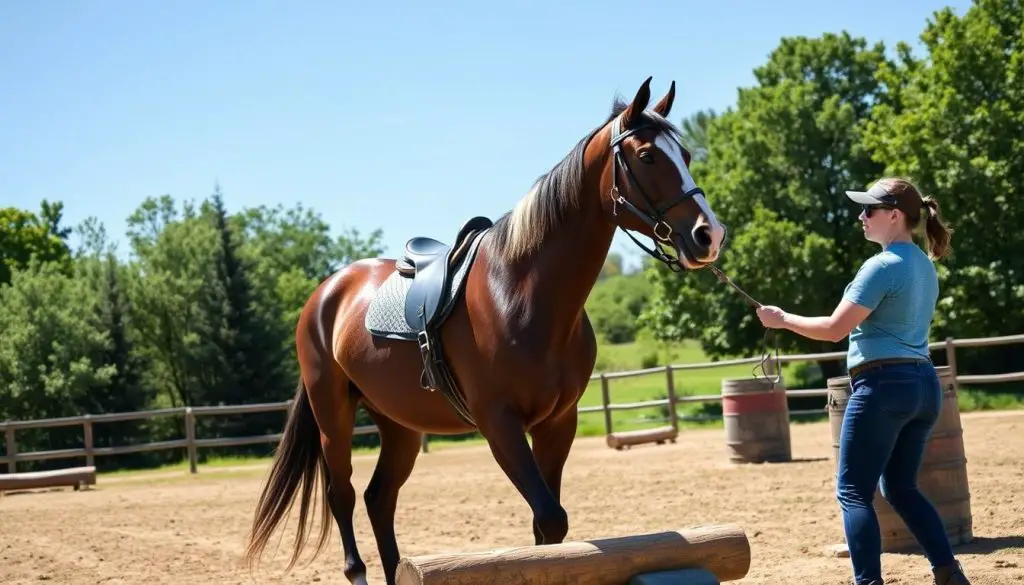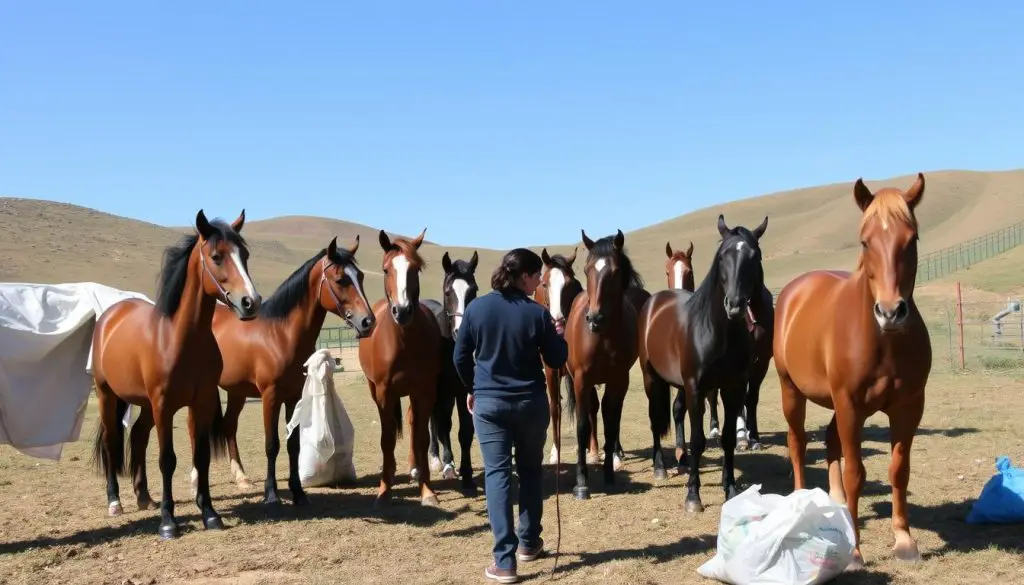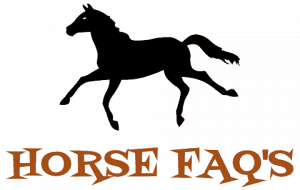Have you ever wondered what sets successful competitors apart in Western trail events? While many believe that success solely hinges on innate talent or sheer luck, the truth lies in comprehensive training and preparation. In this expert guide, we will delve into the essential aspects of how to train for Western trail competitions, focusing on mastering obstacle training, understanding show rules, and implementing effective training techniques tailored for both horse and rider.
Learning the fundamentals of Western trail horse training can significantly elevate your performance during competitions. From navigating through a bridge to showcasing agility over poles and gates, each skill plays a pivotal role in your overall success. By utilizing this guide, you will uncover invaluable tips backed by expert advice that will prepare you and your horse for the challenges ahead.
For those eager to get started, we’re excited to explore various trail obstacle training methods to enhance your horsemanship skills. You may find this notable resource on training horses for trail class obstacles particularly enlightening. Join us as we uncover the secrets to a successful and enjoyable journey through Western trail competitions!
Key Takeaways
- Understanding mandatory and optional obstacles is crucial for successful training.
- Building a solid foundation of trust and communication with your horse enhances performance.
- Diversifying practice patterns prevents horses from memorizing sequences and maintains engagement.
- Gradual progression from simple to complex obstacles allows horses to build confidence and skills.
- Regularly changing training setups and obstacle configurations keeps practice interesting.
- Consistent reinforcement of positive behaviors through rewards fosters a better horse-rider relationship.
Understanding Western Trail Competitions
Western trail competitions present an exciting blend of skill and
How to Train for Western Trail Competitions
Training for Western trail competitions requires a comprehensive approach that focuses on both skill development and obstacle familiarity. A well-structured training plan can significantly enhance a horse’s performance while navigating various challenges. By setting clear objectives and incorporating diverse training activities, trainers can keep their horses engaged and ready for competition.
Developing a Training Plan
A successful training plan development starts with specific goals tailored to each horse’s abilities. Consider the following key components for creating an effective program:
- Establish Clear Goals: Define what skills and obstacles need improvement.
- Create a Timeline: Set milestones for progress, ensuring enough time for building skills and confidence.
- Incorporate Variety: Use different training activities to maintain the horse’s interest and adaptability.
- Regular Evaluation: Continuously assess the horse’s responses to adjust the training approach as needed.
Structured training sessions should include drills focused on trust and communication, gradually introducing complex obstacles. This method fosters a positive relationship between horse and rider, encouraging effective learning during practices.
Incorporating Different Obstacles
Obstacle incorporation is essential for preparing horses for the challenges they will face in competitions. Utilizing various obstacles simulates real competition conditions. Key practices include:
- Bridges and Gates: Focus on technical navigation to enhance the horse’s performance.
- Poles and Tarps: Introduce these elements to develop confidence with differing surfaces and textures.
- Dragging Objects: Train horses to pull items to prepare for obstacles like bags of cans or tarps.
- Pushing and Walking Over Objects: Incorporate tires, barrels, and other items for diverse skillsets.
Consistency in practicing these skills not only builds confidence but also reinforces the horse’s adaptability for competition scenarios. Regular exposure to varying obstacles improves a horse’s ability to generalize learned behaviors across different environments, ensuring success when faced with unexpected challenges.
https://www.youtube.com/watch?v=awP1zHJShdA
| Obstacle | Training Focus | Benefit |
|---|---|---|
| Bridge | Navigating smoothly | Enhances balance and confidence |
| Gate | Opening and closing | Improves precision and control |
| Poles | Walking and trotting | Promotes foot agility |
| Tarp | Walking over | Desensitizes to new textures |
| Water Obstacles | Walking through | Builds resilience and composure |
By focusing on these strategies within a structured training program, trainers can effectively prepare their horses for the demands of Western trail competitions, ultimately boosting their chances for success.
Western Trail Horse Training Basics
Understanding horse training basics is vital for anyone looking to excel in Western trail competitions. Building trust and fostering effective communication between horse and rider sets the foundation for success. Without these elements, essential riding skills cannot be effectively developed. Ensuring that both horse and rider are on the same page leads to a more enjoyable and productive training experience.
Building Trust and Communication
Establishing a rapport with your horse is essential in every aspect of training. Engaging in groundwork exercises enhances building trust, allowing the horse to feel secure and responsive to cues. Techniques such as positive reinforcement play a crucial role in fostering a cooperative partnership. As trust builds, the horse becomes more willing to engage in activities essential for trail riding and competition.
Establishing Fundamental Skills
When training for trail events, special attention should be given to establishing fundamental skills. Horses must be comfortable yielding to pressure, maintaining proper gaits, and executing seamless transitions. These basic movements are essential for trail success. Competitors will find that mastering these riding techniques lays the groundwork for more complex tasks that involve navigating obstacles in trail classes.

| Skill Area | Importance | Methods |
|---|---|---|
| Building Trust | Enhances responsiveness | Groundwork exercises, positive reinforcement |
| Yielding to Pressure | Foundation for movement | Yielding exercises with pressure cues |
| Proper Gaits | Ensures smooth transitions | Practicing walk, trot, and canter |
| Transition Skills | Improves agility on trail | Drills incorporating changes of gait |
Trail Obstacle Training Techniques
Effective training for western trail competitions hinges on utilizing various techniques that enhance both horse and rider performance. By focusing on obstacle course creation and the training technique progression, riders can ensure that their horses develop the skills necessary to navigate the complexities of a trial course.
Creating a Varied Obstacle Course
Designing an engaging and varied obstacle course serves as a cornerstone for successful trail training. Utilizing materials such as poles, plywood for bridges, and ropes for gates promotes both interest and growth. Thoughtfully incorporating a diverse range of challenges ensures that practice remains stimulating. Consider including:
- Flat plywood bridges to simulate trail crossings.
- Basic rope gates constructed from jump standards set 6 to 8 feet apart.
- Serpentines using cones or even plastic containers for additional variety.
- Optional obstacles like mailboxes and water hazards to provide real-world scenarios.
Changing the layout and difficulty of these challenges helps maintain the horse’s engagement throughout the training process.
Progressing from Simple to Complex Obstacles
The training technique progression should follow a methodical approach, starting with simpler tasks before introducing complex maneuvers. This strategy builds the horse’s confidence and skills incrementally. Begin with leading your horse over a flat pole to establish comfort and familiarity. Increase the challenge by introducing:
- Elevated poles that require attention to foot placement.
- Side-passes to navigate tight spaces.
- Back-throughs that demand precision and patience.
Notable competitors in the trail circuit, such as Tom and Phyllis Kirby, advocate for gradually intensifying training to prevent discouragement and bolster the trust between horse and rider. Regularly modifying obstacles and patterns keeps training fresh, ensuring that horses remain engaged without anticipating specific exercises.
Utilizing a structured progression allows trainers to effectively manage obstacle complexity, fostering a rewarding experience as both horse and rider grow together.
Preparing for Trail Competitions
Successfully competing in trail events involves thorough trail competition preparation that encompasses various factors, including show rules understanding and effective practice session organization. Knowing the competition’s rules ensures that riders can demonstrate their horses’ abilities while adhering to set standards. Additionally, structuring practice sessions to reflect actual competition conditions can significantly enhance performance.
Understanding Show Rules and Patterns
Familiarity with the show rules is essential for success in trail competitions. Each breed association provides specific guidelines detailing mandatory and optional obstacles. Understanding the required patterns allows riders to prepare effectively, showcasing their horses’ skills accurately. Judges have established scoring systems that start each horse at 70 points, with deductions for mistakes, including penalties for hitting poles or making errors in gait transitions. Analyzing these rules and knowing what judges focus on can significantly impact competition results.
Setting Up Practice Sessions
Effective practice session organization plays a vital role in competition readiness. Establishing a setup that mirrors the actual show environment helps riders anticipate challenges during the event. Regularly incorporating timing, sequences, and routines into management can improve both riders’ and horses’ competences in navigating courses smoothly. Specific drills that emphasize forward motion, precise backing, and correct alignment are excellent for training. Through consistent practice, riders can build muscle memory, allowing for a more relaxed and confident performance on competition day.
Desensitizing Horses for Trail Challenges
When preparing for trail challenges, desensitizing horses plays a crucial role in ensuring a calm and focused demeanor. This process involves training the horse to remain unbothered by distractions that may arise in outdoor settings. A blend of spook reduction techniques and detailed scenario exposure equips the horse with the tools to handle various stimuli confidently.
Techniques for Reducing Spooking
To facilitate a relaxed response in potentially frightening situations, trainers often implement various techniques. Gradual exposure to novel experiences, such as loud noises, unusual objects, and sudden movements, can be beneficial. For instance, the “tie them to a post, spider hobble them, and bag them down” method offers an innovative approach to help horses remain calm. This technique allows the horse to experience the sensation of slight restraint, while still being allowed to move if necessary. Observing the horse’s reactions during these exercises forms a foundation for effective desensitization.
Exposing Horses to Various Scenarios
Creating exercises that simulate real-world situations enhances a horse’s adaptability. Introducing the mare to experiences like encountering wildlife, crossing streams, or meeting other riders builds confidence. Integrating varied scenarios into training encourages the horse’s natural instincts to thrive. The key lies in providing exposure to different settings progressively, ensuring the horse learns to process these encounters positively.

| Training Technique | Description | Benefits |
|---|---|---|
| Gradual Exposure | Introduce the horse to new stimuli gradually to reduce anxiety. | Builds confidence and a calm demeanor. |
| Controlled Environment | Simulate various outdoor scenarios in a safe setting. | Prepares the horse for real-life challenges. |
| Empathetic Training | Pay attention to the horse’s emotional responses and react accordingly. | Strengthens the horse’s parasympathetic nervous system for relaxation. |
Conditioning for Trail Events
Effective trail event conditioning forms the backbone of a successful training regimen for both horse and rider. By focusing on physical conditioning routines and stamina building, participants can enhance their performance while minimizing the risk of injury. This section highlights essential exercises and training strategies that will elevate endurance training for upcoming competitions.
Physical Conditioning Routines
Establishing a well-structured fitness plan is crucial to ensure that horses are physically prepared for the demands of trail events. Riders should aim for at least three conditioning sessions each week that complement regular trail rides. Key exercises may include:
- Backing Up Exercise: Walking the horse backward for at least 30 steps, which reinforces muscle balance and gait.
- Turn-on-the-Forehand: Executing three turns in each direction to engage and strengthen core muscles.
- Gait Transitions: Making three transitions every twenty meters helps improve the horse’s dexterity and readiness.
- Posture Changes: Riding in a shorter frame, followed by stretching encourages flexibility and core engagement.
Building Stamina and Endurance
Building stamina is vital for competing in trail challenges that require prolonged exertion. Incorporating longer trail rides into the training regimen helps both horse and rider develop endurance and resilience. Riders should consider employing the following strategies:
- Integrate sustained long-distance training to enhance aerobic capacity, focusing on sustainable workouts rather than constantly pushing to failure.
- Incorporate mountains or challenging terrains to prepare for steep climbs and technical sections of trail events.
- Utilize specific workouts designed for mountain running, ensuring a diverse training regimen that targets different muscle fibers.
| Workout Type | Frequency (per week) | Main Focus |
|---|---|---|
| Conditioning Rides | 3 | Build overall fitness and fatiguing strength |
| Long Distance Rides | 1-2 | Enhance endurance and aerobic capacity |
| Specific Strength Workouts | 1 | Target particular muscle groups and improve recovery |
Through dedicated trail event conditioning and a focus on stamina building, riders can ensure that they and their horses are well-prepared for the challenges ahead. Implementing these strategies leads to improved performance and enjoyment during competitions.
Horse Trailer Loading Practice
Successfully transporting a horse necessitates careful trailer loading practice. The loading phase often represents the most stressful moment for horses, especially those unfamiliar with trailering. Cultivating comfort during this critical process is essential for ensuring the horse’s relaxation and transport readiness.
Importance of Trailer Training
Establishing a solid foundation in trailer training contributes significantly to a horse’s overall comfort while traveling. Horses may not perceive depth as acutely as humans, which can lead to hesitancy when approaching the trailer. Their limited binocular vision means they benefit from a gradual introduction to the concept of loading. This process allows them to integrate visual and auditory cues safely.
Techniques for Stress-Free Loading
Utilizing stress-free loading techniques can transform a daunting experience into a positive one. Consider the following strategies for an effective trailer loading practice:
- Gradual Exposure: Start by allowing the horse to explore the trailer without pressure.
- Positive Reinforcement: Use gentle praise and rubs on the wither as rewards when the horse makes progress.
- Structured Steps: Break the loading process down into manageable tasks, gradually increasing complexity.
- Encouragement Techniques: Employ verbal cues like ‘cluck’ for forward movement, and tactile cues to guide the horse.
- Safe Environment: Ensure the horse feels safe during the loading process, allowing an avenue for escape to build trust.
It is vital to avoid using methods such as lip chains or aggressive coercion. Instead, focus on desensitizing exercises that encourage voluntary participation. Remember to close the trailer door slowly after the horse enters to prevent reinforcing fear. Following these principles will contribute significantly to achieving efficient trailer loading and transport readiness.
Conclusion
In summary, effective training for Western trail competitions is a multifaceted endeavor that combines an understanding of the competition structure, building trust with your horse, physical conditioning, and preparing for diverse obstacles. By focusing on the core elements mentioned throughout this guide, horse owners can enhance their animals’ skills and confidence, laying the groundwork for successful performances in trail events.
When summarizing trail preparation, remember that the course typically features six to ten obstacles, including mandatory tasks such as passing through a gate and riding over logs. The scoring system rewards precision and skill, underscoring the importance of consistent practice and familiarity with various challenges. Emphasizing these aspects will not only prepare your horse for competition but also strengthen the bond between rider and horse, creating a rewarding experience for both.
Ultimately, the journey towards mastering Western trail training involves commitment and patience. With the right techniques and a clear understanding of expectations, riders can ensure their horses are not only competition-ready but also equipped to handle the demands of the trail. This holistic approach to training pays dividends during competitions and fosters a lifelong partnership between horse and handler.
